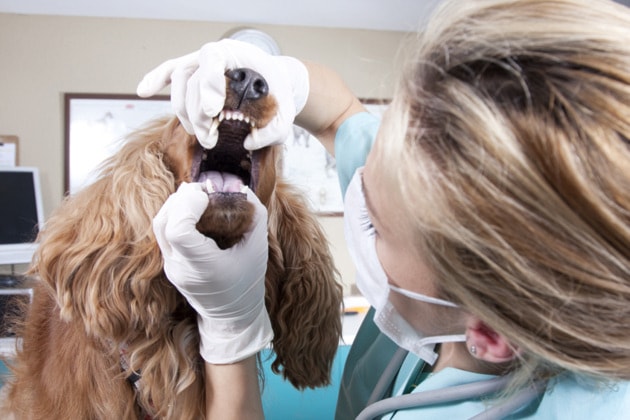Dr. Moshe Oz/Contributor
February is the month of dental health promotion. Life is full of humps and bumps and we often need to face sudden and unexpected medical crises.
However, some medical issues are preventable with the right precautionary care. Dental hygiene is one , if not the most important aspect of veterinary preventative medicine.
Oral hygiene has both medical and cosmetic significance. Being aware and proactive about your pet91ÂãÁÄÊÓƵ™s oral hygiene can positively influence your pet health and longevity.
We humans, brush our teeth at least twice a day in order to keep them healthy. Dogs and cats have teeth just like we do, and the same conditions that lead to our tooth and gum problems also occur in our pet91ÂãÁÄÊÓƵ™s mouth. Oral hygiene has perhaps been the most neglected aspect of pet health care.
Researches showed that 90 per cent of pets over two years of age have significant mouth disease and 50% of them require immediate attention. Small breed dogs such as Yorkshire Terriers, Toy Poodles, etc. are more prone to tartar buildup. Dental disease in pets goes beyond bad breath. Your pet can also be affected by serious oral health threats that can have an impact on more than just its mouth.
When a dog eats, food, saliva and bacteria will stick to its teeth. This combination of food, saliva and bacteria is called plaque. The bacteria in plaque produce toxins, which cause inflammation and breakdown of the gums and tissue surrounding the teeth. Inflammation of the gum around the teeth is called gingivitis. When plaque stays on the teeth for long enough, it will harden and turn into tartar also known as calculus. Tartar allows more bacteria and debris to accumulate, which makes inflammation of the gums worse.
If this process goes unchecked, the supporting structures of the tooth degenerate. This process is known as periodontal disease. The gums become separated from the tooth (periodontal pockets) a condition, which might lead to tooth abscess (formation of pocket of pus around the tooth91ÂãÁÄÊÓƵ™s root) and eventually to loss of the tooth. Dental diseases are causing pain and discomfort, bad breath, and bleeding from the gums.
The dental disease significance goes way beyond the oral health. A pet with an advanced oral disease is at risk of developing multiple medical problems because of shifting of the bacteria from the mouth to various internal organs through the bloodstream. Severe dental disease can lead to life threatening conditions. The main target organs at risk are the lungs, heart, kidney, and joint infections.
So what can you do to maintain good oral health of your pet? The best way to prevent tartar accumulation and gingivitis is daily brushing. You can use a baby tooth brush but I personally find that the easiest is to use pet oriented toothbrush that you can wear on your finger. You should always use pet toothpaste and not human toothpastes, nor salt or baking soda. Toothpastes foaming action is irritating and all of these substances can cause illness if swallowed.
Pets that are getting fed by canned food are more prone for developing dental diseases.
In general, feeding the dog a commercial dry food, is better when it comes to dental health and delaying dental plaque formation. Furthermore, certain premium pets food companies make a special dental diets. These diets come in form of kibbles. The way the kibbles are made preserve the teeth,and the dental plaque formation is much slower. I recommend these dental diet, as a primary maintenance diet, for any healthy pets that do not require any other special diet for a different medical issue.
Many people still believe in giving their dog, cow91ÂãÁÄÊÓƵ™s bones to dogs to chew on. The concept that chewing on the bone cleans the teeth may be true, however, the risk of tooth fractures does not worth the potential benefit.
The best way to treat gingivitis and plaque accumulation is with a professional veterinary cleaning. This procedure requires general anesthesia. While a dog is under anesthesia, the teeth are cleaned and polished in the same manner that a human dentist cleans and polishes people91ÂãÁÄÊÓƵ™s teeth. The teeth are cleaned both above and below the gum line. In some cases, where there is an abscess or severe infection under or around the tooth root, a tooth may need to be extracted. Most dogs do very well after having teeth pulled. A great many of them can even continue to eat dry food after losing a large number of teeth.
Providing your pet with good oral care is extremely important to its health. Unfortunately some pets are reluctant to cooperate so it can can be very challenging. An annual oral exam is recommended. Your veterinarian will assess the teeth condition and will consult you about specific ways to improve and maintain your pet91ÂãÁÄÊÓƵ™s oral hygiene.
Dr. Moshe Oz operates the Rose Valley Veterinary Hospital in West Kelowna.
250-7699109



